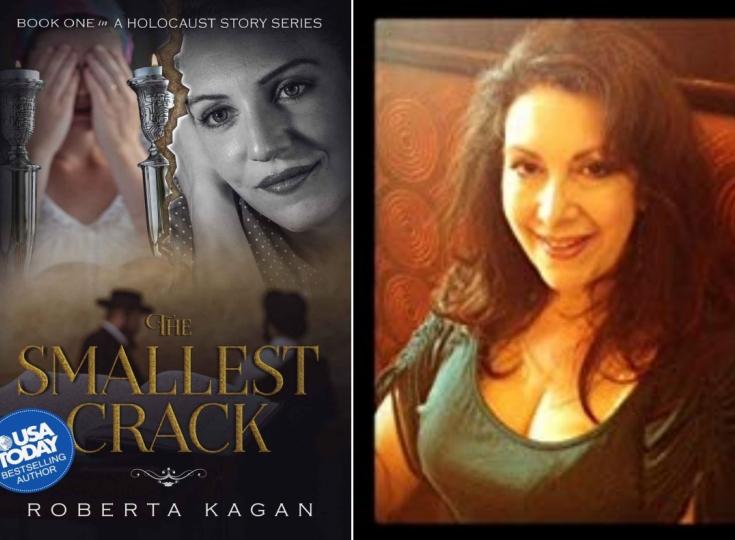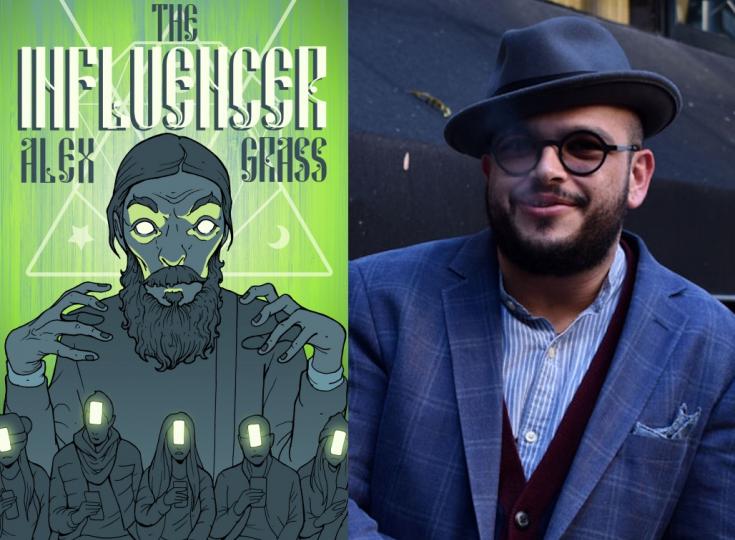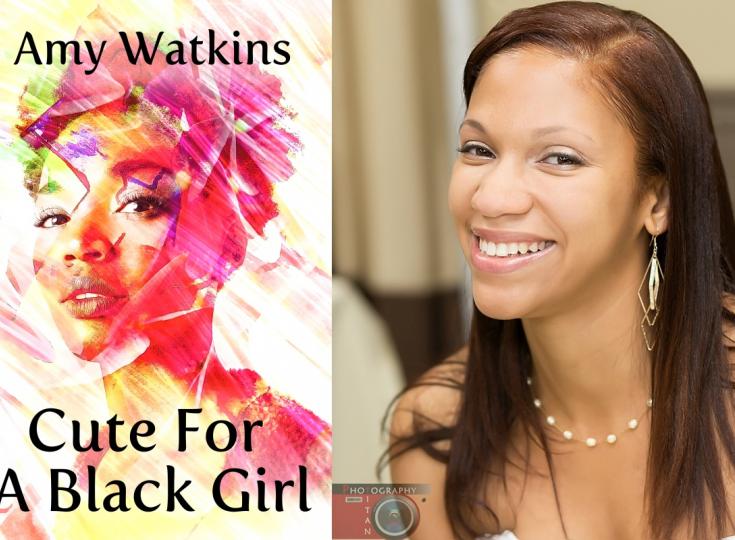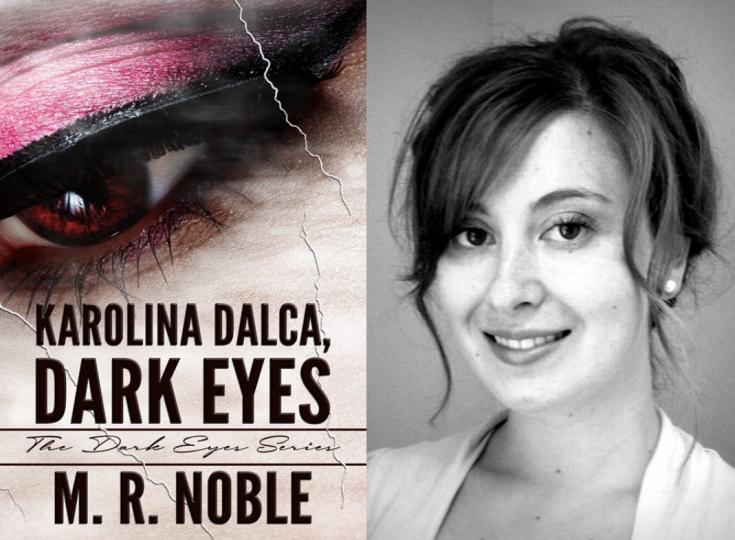Roberta Kagan - Inspired by Holocaust Survivors

Roberta Kagan is an USA Today Best Selling Author of Historical Jewish Fiction mainly set during World War 2. Her father was Romany and her mother was Jewish, When she was very young, she learned about the Holocaust. She couldn't understand how something like this could happen. So, she began to research and learn more. She met with survivors. She even met with children and grandchildren of SS officers. She realized that soon all of the survivors will be gone. Their message must be remembered, the sacrifices that they made must not be forgotten. And so she tries to tell their stories. It is painful, but she must convey the darkness and horror of the time. However, she also wants the world to know and celebrate the unsung heroes. Because there were many ordinary people who acted in heroic ways. As our Author of the Day, Kagan tells us about her book, The Smallest Crack.
Please give us a short introduction to what The Smallest Crack is about.
The smallest crack takes place in Berlin in 1933 just as Hitler is appointed Chancellor of Germany. It is the story of, Eli the son of a Jewish Rebbe, Rebecca his beautiful and loyal wife from an arranged marriage, and Gretchen, the brilliant, lovely, and spirited non-Jewish woman who has captured his heart from afar.
What inspired you to write about a forbidden friendship during Hitler’s rise to power?
The Smallest Crack is a story of both great love and deep friendships. Over the years I’ve had the honor of meeting with many Holocaust survivors and the stories that most fascinate me are the ones where non-Jewish people risk their lives to save Jewish people that they have come to love. Their stories are captivating because this is the kind of love that everyone dreams of. It is a love that is so deep and all-encompassing that the lovers would rather lose everything, even their lives, than walk away.
Why did you pick Berlin as the backdrop for your story?
My mother’s family were German Jews who owned apple orchards on the outskirts of Berlin. Many of the stories my grandparents told me took place in this fascinating city. Their tales of life in Berlin before the Nazis rose to power told of a city that was filled with contrast. There was hyperinflation and corruption, as well as a frantic, wild, and decadent attitude among the inhabitants. However, at the same time, the city was home to some of the finest artists, musicians, writers and some of the greatest minds of the time.
Tell us more about Eli Kaetzek. What makes him tick?
Eli is the son of an important Hasidic Rebbe. He is torn between two women. On the one hand, he can make his father proud and fulfill his obligations to the congregation by following through with his arranged marriage to the beautiful Hasidic, Rebecca, who is everything he should want in a wife. But on the other hand, his heart is crying out for a non-Jewish woman, Gretchen, who is brilliant and outspoken. The Smallest Crack sees these three thrown together as they discover that they will all need each other if they are going to have any chance of surviving Hitler, the Nazis and the dark reign of the Third Reich.
How much research did this book require from you? What was the most interesting aspect of the research?
Every day I am learning and educating myself on different aspects of this terrible time in history. Whether it be reading, watching documentaries, meeting with survivors, and sometimes meeting with children of former Nazis, I am always learning something new. The Smallest Crack was inspired by a visit that I made to a Hassidic neighborhood where I was honored to meet a Holocaust survivor. Her story prompted me to read and discover as much as I could about the Hasidic way of life so I could share it with my beloved readers.
Beside writing what other secret skills do you have?
Skills? I’m not sure I have any, lol. However, I love animals. They seem to know how I feel about them and they respond to me. Right now, I have three cats, one of which I recently adopted from a cat café. But I also work well with dogs and surprisingly with some exotics like Chimpanzees too.
I also enjoy cooking. Am I good at it? That’s questionable. However, my daughter recently bought me a cookbook from Ellis Island which features recipes from immigrants from all over the world. Every Sunday my daughter and I try to create a new dish for Sunday dinner. Some are better than others, but whenever I prepare a new dish, it always touches my heart to think of people immigrating to America and bringing their wonderful cultures with them.
This is the first book of a series. Can it be read as a standalone? How do the other books in the series tie in with this one?
All of my books can be read as standalone novels. However, every book brings the reader into the next one in the series. The Darkest Canyon, which follows The Smallest Crack, continues the journey of Eli, and his wife Rebecca. It also follows Gretchen, the girl Eli is smitten with, and Gretchen’s best friend, Hilde, who is an avid Nazi. The Darkest Canyon also introduces new characters like Ilsa, a Nazi guard at Ravensbrueck concentration camp for women. Ilsa is a terrifying Sociopath with a horrific past. She is a fictional character who is based on a real guard at Ravensbrueck. Her diabolical behavior is an unnerving study into a sick and disturbed mind.
The next book in the series is Millions of Pebbles, which presents the reader to another group of characters in the Lodz ghetto whose lives intertwine with the existing characters from the previous novels in the series. In Millions of Pebbles, the reader will meet the self-serving Chaim Rumkowski, who was a real person and just as monstrous in real life as he was in this book. You will also meet the fictional romantic Ben Rabinowitz, and the love of his life Zelda, and her children, Sarah and Solomon.
The final book in this series is Sarah and Solomon. In this novel, the reader will pick up from saying Goodbye to Sarah and Solomon in Millions of Pebbles to following them as they escape the Lodz Ghetto only hours before they would have faced execution. This is the story of two young children who were forced to wander through war torn Poland alone.
Which of the Holocaust stories that you have heard made the biggest impact on you?
I’ve been asked this question many times. It is very difficult to answer. Because every story is unique and filled with miracles. Miracles you ask? And I say, absolutely. The determination of the Nazi’s to destroy all people who did not fit into their new world order was relentless. Their cruelty and lack of mercy were beyond human comprehension. So every time a person survived they did so because of a series of miraculous events. What do I mean by a miracle? I mean a Nazi guard called away by his superior officer right before he has the chance to shoot a prisoner in the head. I mean a gun that runs out of bullets when a Nazi is about to kill a prisoner during roll call. Or during a death march, a dog that runs after a squirrel into the woods causing his master to chase him and thereby allowing a prisoner a few precious minutes to escape into the forest. There were so many of these small miracles, not enough perhaps, but, so many. And each small miracle was a chance at another day of life for one precious soul.
What advice would you give your younger self?
I was a bit of a wild child in my youth. A terror I suppose. I regret the effects my behavior had on my parents. However, I know that I would not be the person I am today had I not done the things I did as a young person. I learned so much about people, and about myself. So, I don’t know if I would change anything. I suppose I would tell my younger self not to despair, that every experience, regardless of how difficult or painful would lead us to where I am today and that is a perceptive and caring, very caring woman.
What do you enjoy most about your work?
I enjoy so many aspects of my work, the people I meet, the research, the storytelling itself. Even though sometimes the research is very painful, I can’t tell you how many times I have cried with a survivor, I still believe that it is important that these stories be told. As I have said so many times before, soon father time will take all of the survivors away from us. All that will be left will be the accounts of their stories. I am honored, truly honored and humbled to have been chosen to tell some of these stories.
Is there something that compels you to write? And do you find that writing helps you achieve clarity about yourself or ideas you’ve been struggling with?
You will probably find this funny, but I get most of my ideas for my books when I am washing my hair. Then, of course, I have to jump out of the shower, head full of shampoo ( which usually gets in my eyes) and run to the computer to write the idea down before I lose it.
Do you have any interesting writing habits? What is an average writing day like for you?
My cats wake me up at three in the morning. They have decided that I need more time to write and early morning suits them best. I quickly feed them and then all four of us, three of them and one of me head into the computer room. They fight with each other to sit on my lap as they generously offer me writing suggestions by trying to remove the keys on the keyboard with their claws. Or they make attempts to turn off the monitor. I gently shoo them away. However, they always return even more determined to be of assistance.
Meanwhile, I play Peaceful Piano on Spotify. As I gaze out the window searching for the exact word or phrase to communicate my idea. And… to tell you the truth I wouldn’t have it any other way.
What are you working on right now?
I am presently working on the final book in the Smallest Crack series. It is book four and it’s called Sarah and Solomon. It is the continuation of the first three books in the series. Book One: The Smallest Crack, Book Two: The Darkest Canyon, Book Three: A Million Pebbles, Book Four: Sarah and Solomon.
In the novel “Sarah and Solomon” the reader will follow two young children as they escape from the Lodz Ghetto only to wander alone and frightened through Poland. These two young innocents will discover that monsters don’t always hide under beds. Sometimes they are adults who wear fancy uniforms and hunt down little children just because they are Jewish. It is a chilling tale, based on a true story. However, even though it is frightening Sarah and Solomon ultimately tells an uplifting story that emphasizes the strength of the human spirit. In the story of Sarah and Solomon the reader will find tiny rays of light even in the darkest and most dangerous places.
Where can readers discover more of your work or interact with you?
I love to interact with my readers! I can be emailed through my website, which also includes a complete list of my current books as well as upcoming projects I am working on. And, if a reader chooses to sign up for my mailing list, they will receive three free short stories and a free novella as my gift to them. Also, they will receive exclusive excerpts from my newest novels before they are released.
Besides my website, I have a presence on Instagram, and two on Facebook. They are:
Roberta Kagan author
Roberta Kagan book club




